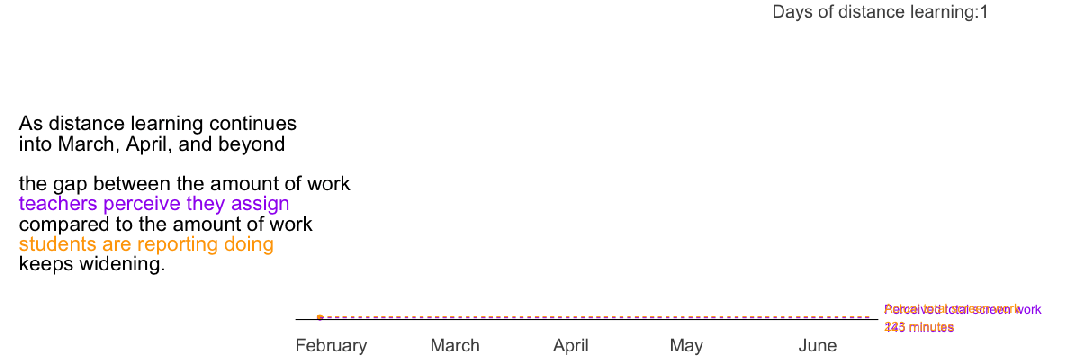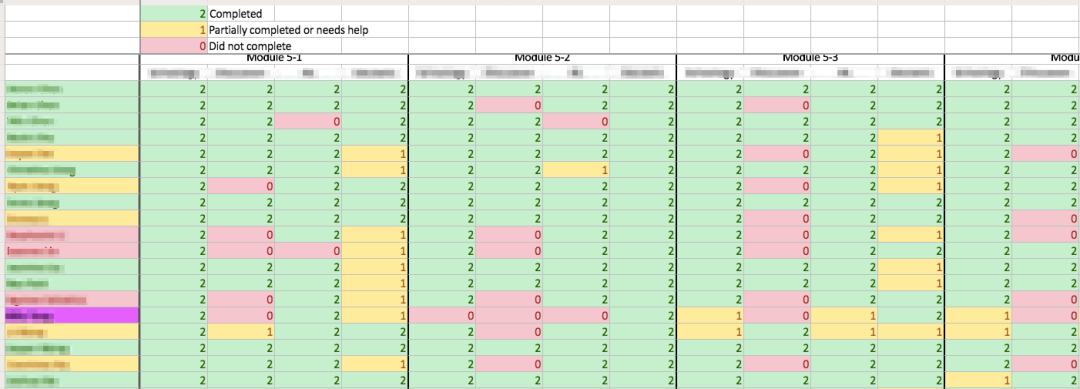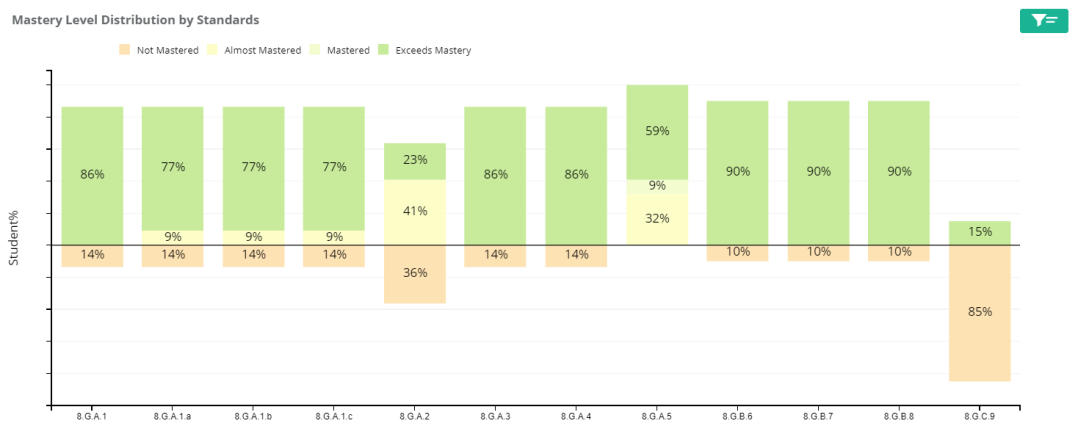I believe that now more than ever, the argument that data plays a crucial role in eLearning has become obvious. But what data is most valuable? And how should we collect it? Here are 4 types of data I have been collecting that have helped me make decisions, be informed, and be creative with my practice.
1. Time-On-Task Data
Early on, we identified that learning activities for secondary students should last around 45 minutes. A recent study out of MIT saw patterns of around 3-4 hours per day for secondary students and less for younger learners. To see time on task, the best way is to poll both students and teachers and after my first round of polling, I noticed a difference:

Now this was only simulated data based on the first survey result across numerous teachers – however this graph helped us all understand the demand we might unknowingly be putting on students.
Other types of Time-on-Task data I’m collecting:
- Learning Management System logins
- Practice and Quiz apps that record the engagement time of users
2. Activity Completion Data
My personal belief is that engagement and connection is more important than mastery during this unplanned eLearning. More simply, I care if they are participating and less about how they are participating. I created this distance learning activity tracker (click here for the template) for teachers to track engagement:

If a name turns yellow, I reach out with a positive message of support and if a name stays green, they get encouragement as well. We also found it really beneficial for teachers of the same course to share their documents with one another.
Other types of Activity Completion Data I’m Collecting:
- Completion reports from online practice tools
- Assignment submission data on our Learning Management system
- Discussion post participation
3. Learning Preference Data
Moving into Distance Learning – in literally one day’s time – meant we were all novices again. I found the best way to find the elusive best practices was just to experiment with lesson design and ask for feedback. My favorite way to gather this feedback is during my synchronous sessions. A video I watched from this Indiana University professor gave a tip about “the Social 5” – five minutes of time at the beginning to connect with students as others hop on:

During the first few minutes of a class, I’ll ask students how they are doing, what they’ve been up to, and how my online lessons are going. I do this every time I hold a live lesson and take notes.
Other types of Learning Preference Data I collect:
- Survey data on how a lesson is structured (see blog post here)
- Targeted emails reaching out to parents and students
4. Achievement Data
I keep going back to this Webinar with leading thought gurus Thomas Guskey, Lee Ann Jung, Ken O’Connor, and Rick Wormeli. My favorite quote comes from Dr. Jung when she says, “it is not just to think about how we move it to remote learning, it is how we pare it down to what matters most.”
Therefore, what matters most in achievement, is not making a judgement about students’ mastery, but instead using achievement data to inform myself about my own teaching. I make daily exit slips and twice monthly check-ins on Edulastic, where I can track performance against standards and clusters:

This data is then compared against these grade level priority documents from achievethecore.org to highlight, and have conversations around, areas of relative strength and challenge for next year’s teachers.
Other Achievement Data I collect:
- Student video responses explaining a concept
- “What about this…?” Discussion posts where students explore an extension of an idea
The data we collect now is not only important during Distance Learning, it will be important for the start of next year and beyond.

